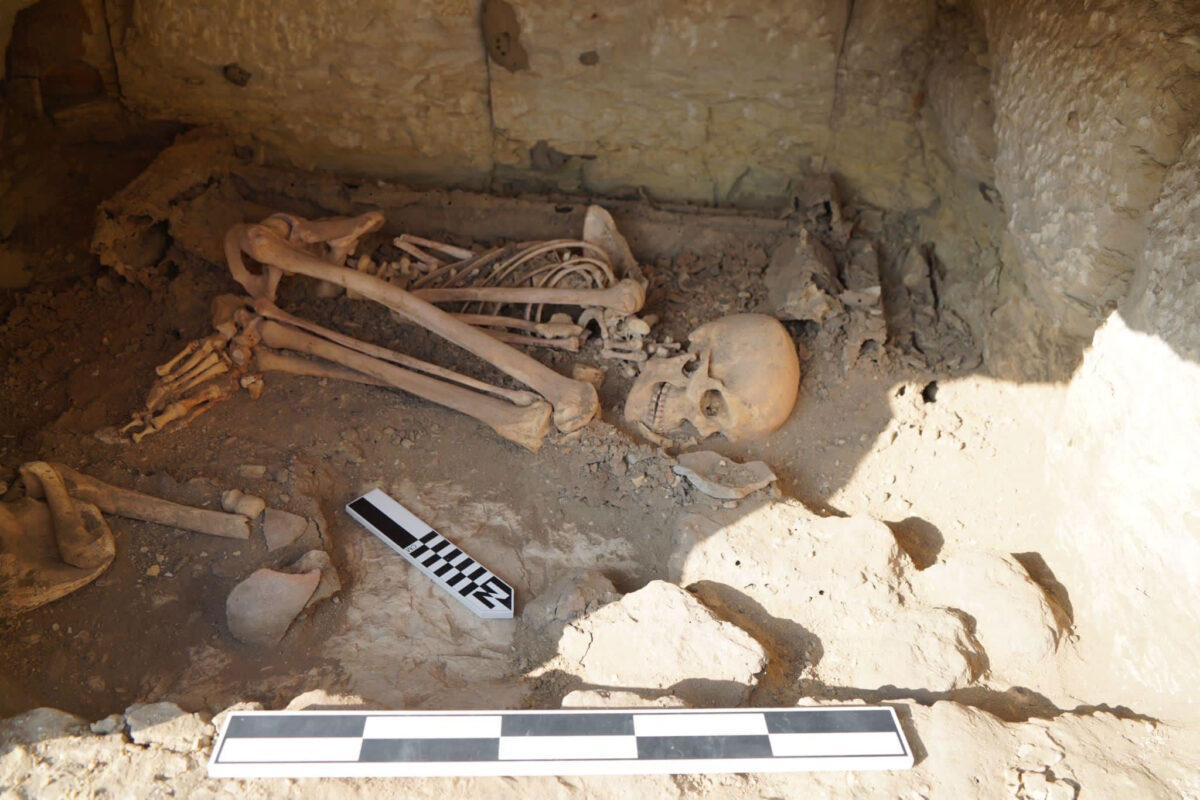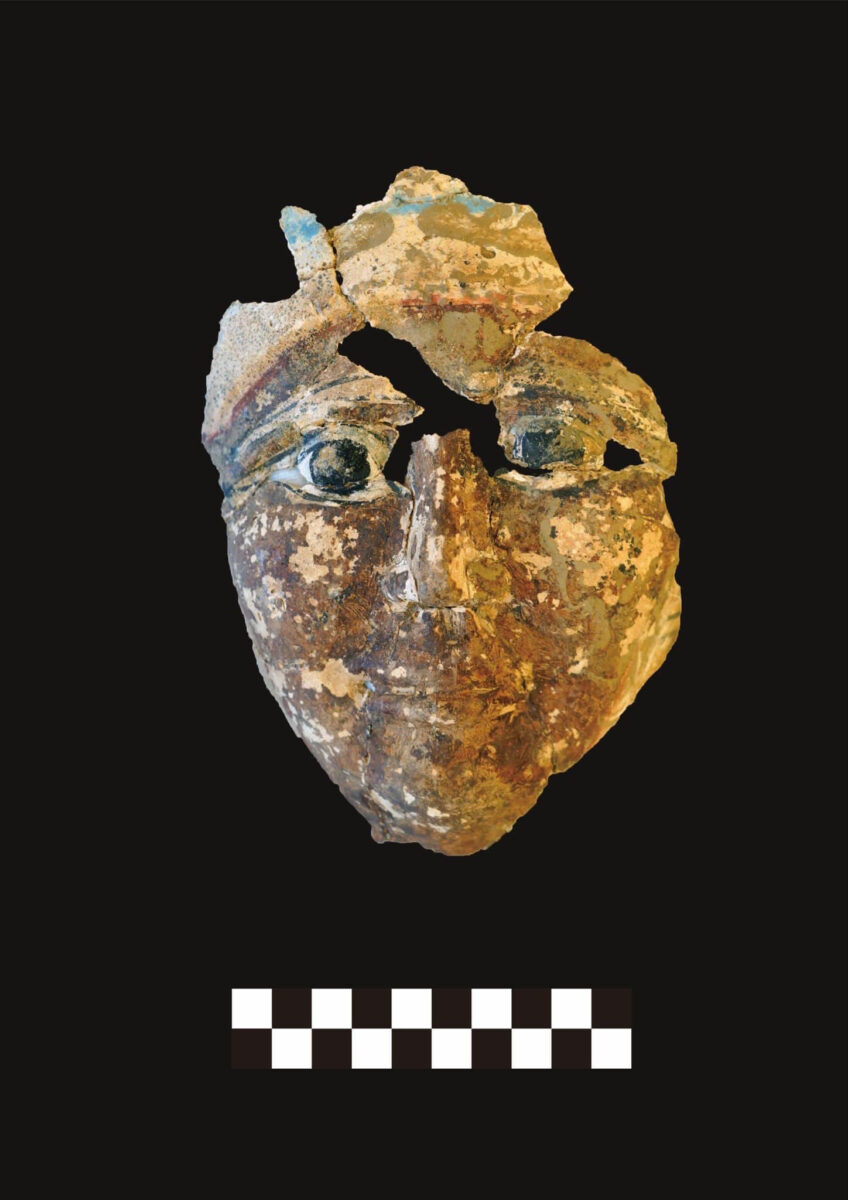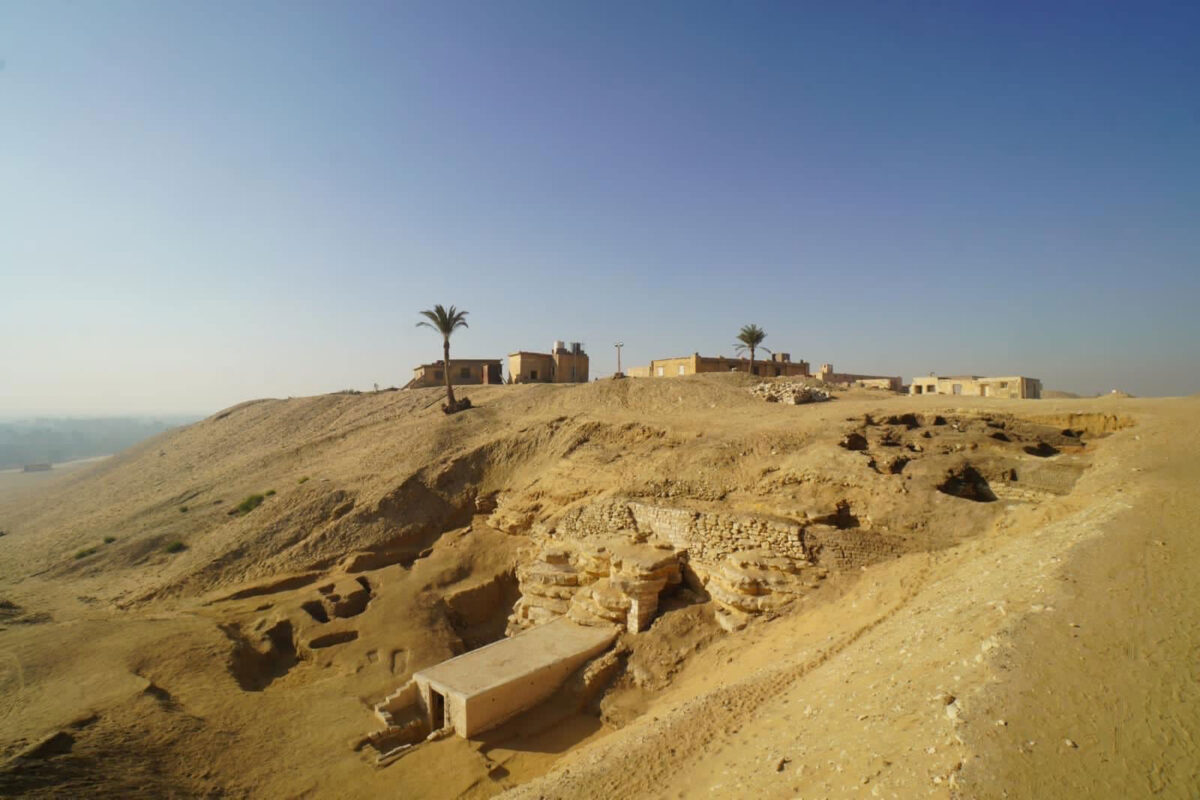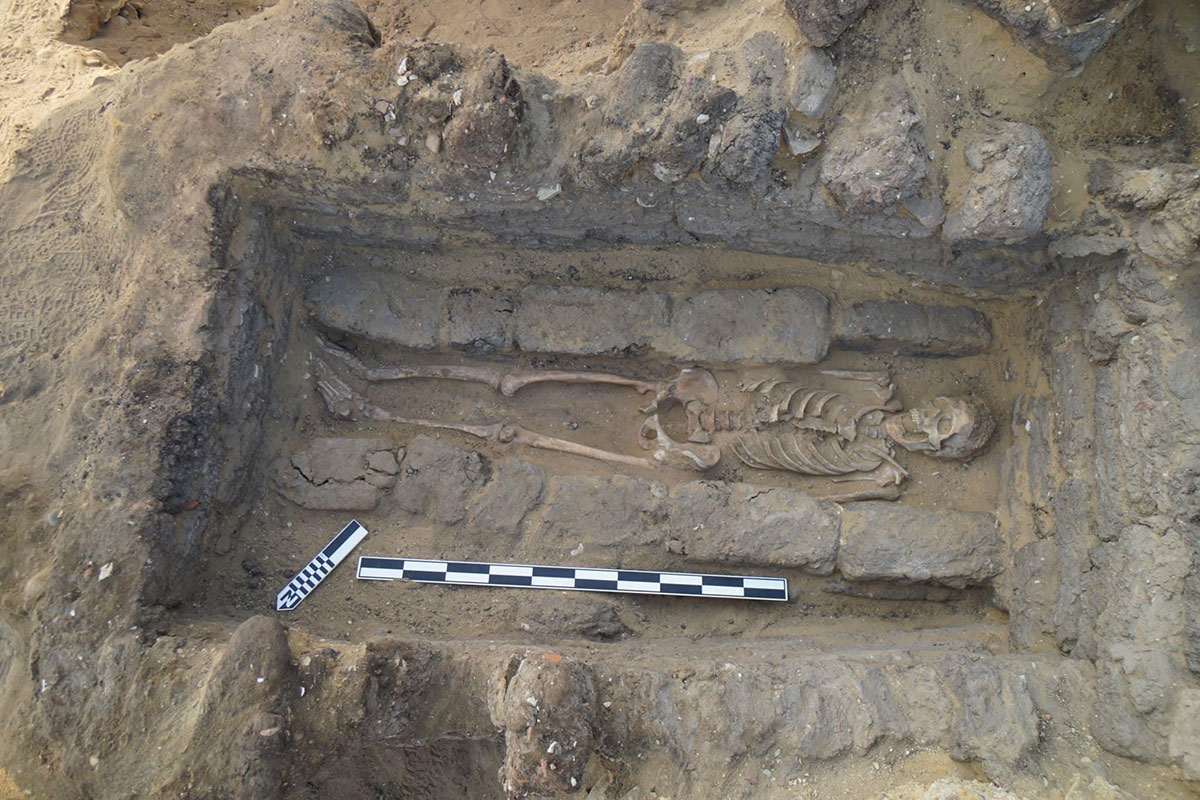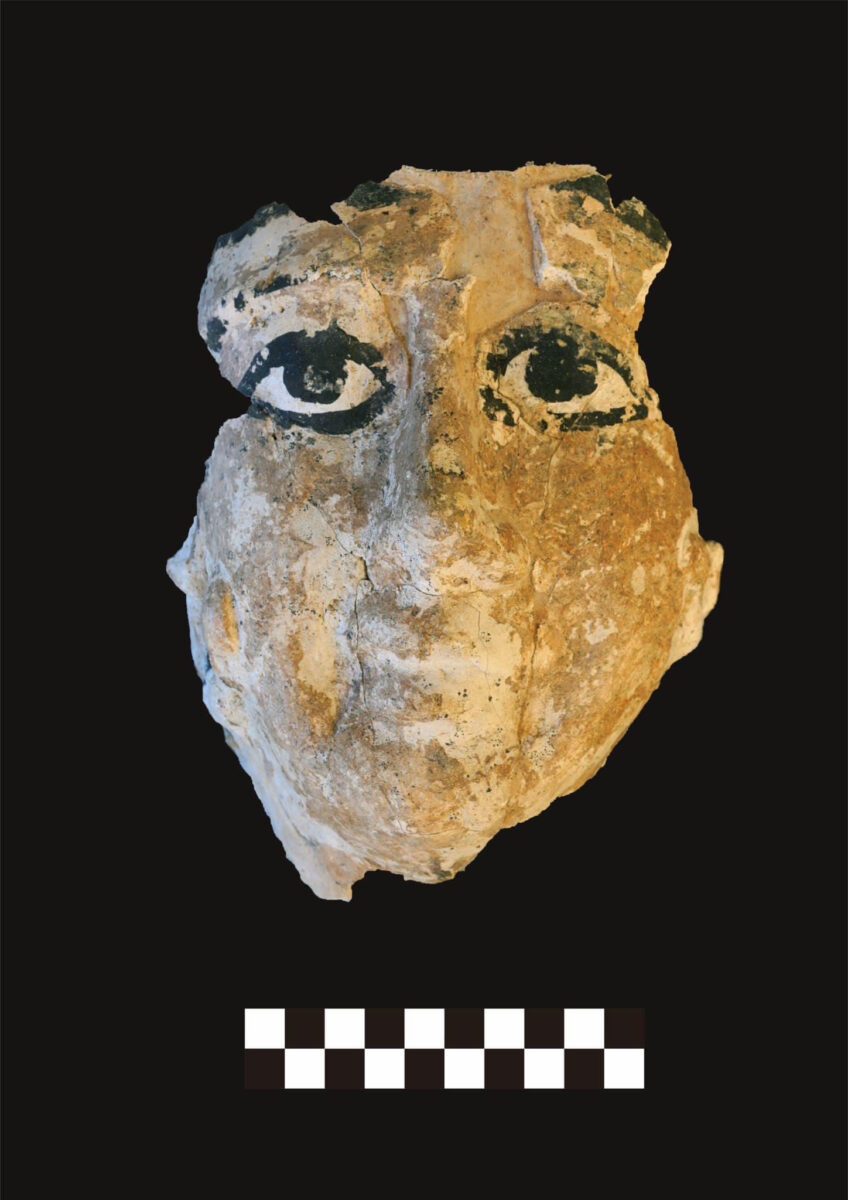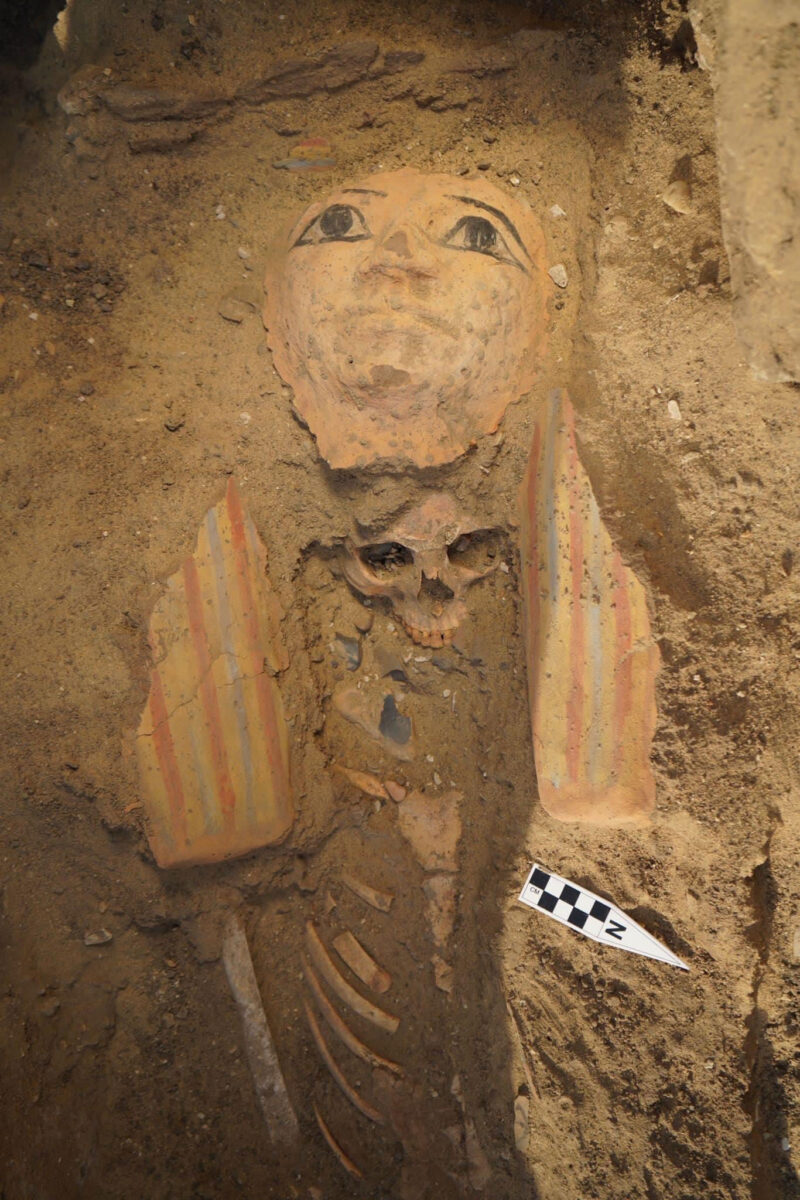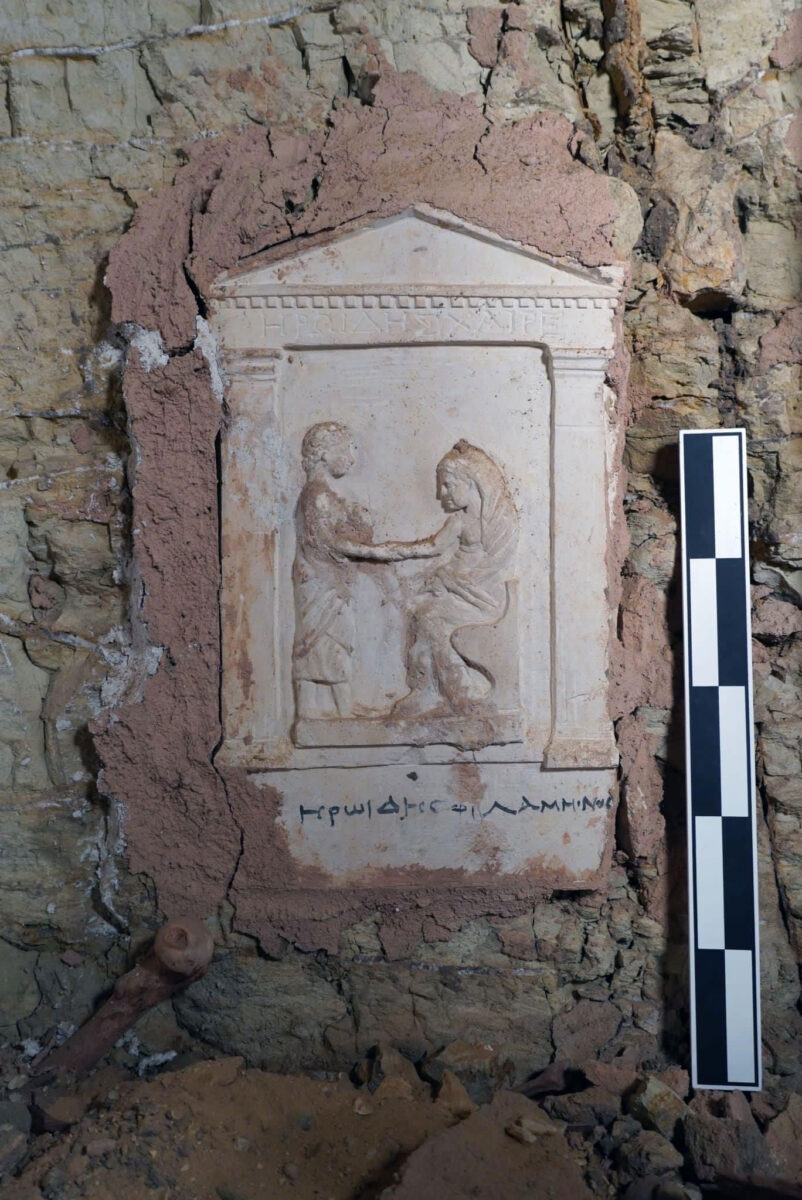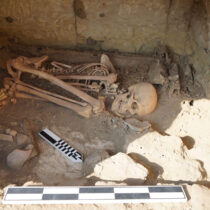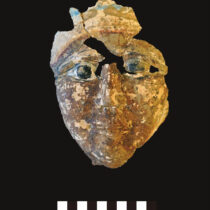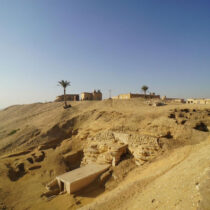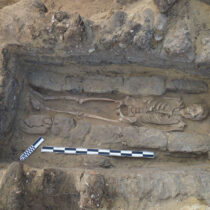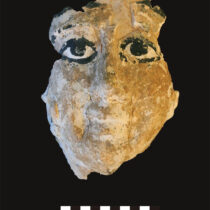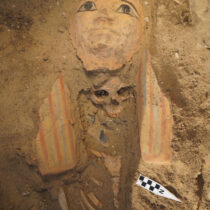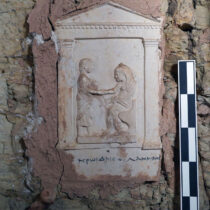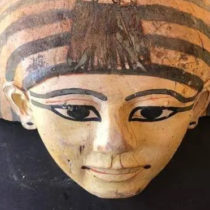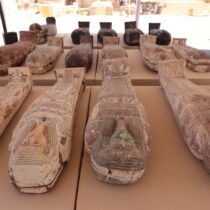The joint Egyptian-Japanese archaeological mission of the Supreme Council of Antiquities and the University of Kanazawa University completed the excavation of a rock cut tomb, further architectural remains and burials, during the current excavation season in Saqqara.
Mustafa Waziri, the general secretary of the Supreme Council of Antiquities, explained that the study of the tomb’s architectural design and the pottery vessels ans shards found inside it indicates its date back to the Second Dynasty.
Muhammad Youssef, Director General of Saqqara Antiquities and Head of the Mission from the Egyptian side, that the burials found include the remains of a man with a funerary mask, and a small child. Further burials, of the Ottoman era, also came to light, while an pharaonic era coffin was dated to the 18th Dynasty.
Dr. Nozomu Kawai, head of the mission from the Japanese side, indicated that the mission discovered finds, such as two terracotta statues of the goddess Isis with the remains of white color and a statuette of Harpocrates riding a bird, a mask with the remains of green and white, and parts of two faience amulets of the goddess Isis, a statuette of god Bes, part of an ushabti of limestone with the remains of hieroglyphic writings. Dr. Kawai stressed that the mission has carried out archaeological registration and documentation of all the finds, expressing his hopes that the mission will make more discoveries in the region during its upcoming excavation seasons to reveal more secrets of the archaeological area of Saqqara, which is still revealed.
